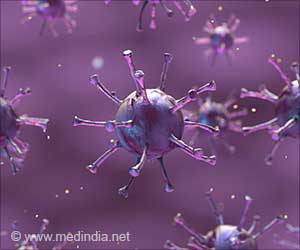Transmembrane protein TMEM41B was essential for SARS-CoV-2 to replicate, said researchers.

‘CRISPR that maps the molecular weaknesses in SARS-CoV-2 serves as a model for scientists worldwide for confronting future viral outbreaks.’





The latest finding comes from a pair of studies led by researchers at NYU Grossman School of Medicine and NYU Langone Health's Perlmutter Cancer Center, and colleagues at Rockefeller University and elsewhere. Researchers compared how the COVID-19 virus reproduces in infected cells in deadly flaviviruses, including those responsible for yellow fever, West Nile, and Zika disease. They also compared how the virus replicates in infected cells to three other seasonal coronaviruses known to cause the common cold.
"Together, our studies represent the first evidence of transmembrane protein 41 B as a critical factor for infection by flaviviruses and, remarkably, for coronaviruses, such as SARS-CoV-2, as well," says the studies' co-senior investigator John T. Poirier, PhD.
"An important first step in confronting a new contagion like COVID-19 is to map the molecular landscape to see what possible targets you have to fight it," says Poirier, an assistant professor of medicine at NYU Langone Health.
"Comparing a newly discovered virus to other known viruses can reveal shared liabilities, which we hope serve as a catalogue of potential vulnerabilities for future outbreaks."
Advertisement
CRISPR, the gene-editing tool, was used to inactivate each of more than 19,000 genes in human cells infected with each virus, including SARS-CoV-2. Researchers then compared the molecular effects of each shutdown on the virus' ability to replicate.
More research is needed to determine if TMEM41B mutations directly confer protection against COVID-19, and if East Asians with the mutations are less vulnerable to coronavirus pandemic.
Source-Medindia










